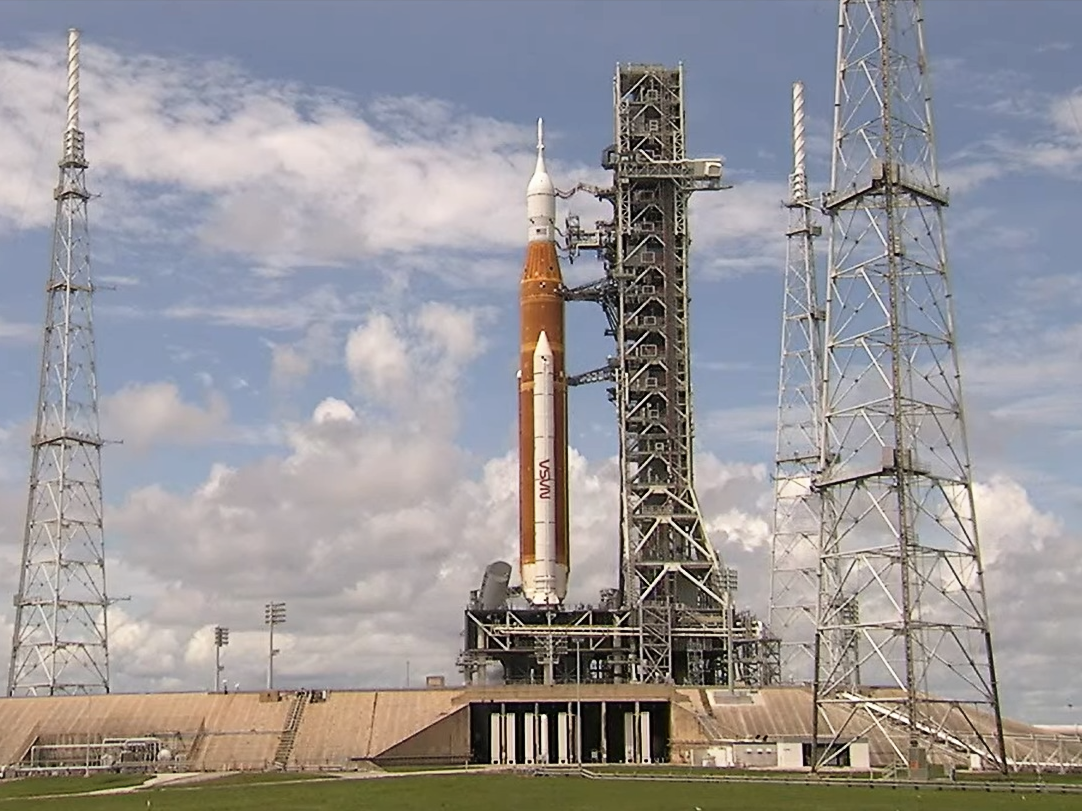Artemis launch - as it happened: Nasa delays moon after rocket launch scrubbed

Your support helps us to tell the story
From reproductive rights to climate change to Big Tech, The Independent is on the ground when the story is developing. Whether it's investigating the financials of Elon Musk's pro-Trump PAC or producing our latest documentary, 'The A Word', which shines a light on the American women fighting for reproductive rights, we know how important it is to parse out the facts from the messaging.
At such a critical moment in US history, we need reporters on the ground. Your donation allows us to keep sending journalists to speak to both sides of the story.
The Independent is trusted by Americans across the entire political spectrum. And unlike many other quality news outlets, we choose not to lock Americans out of our reporting and analysis with paywalls. We believe quality journalism should be available to everyone, paid for by those who can afford it.
Your support makes all the difference.Nasa has scrubbed the second attempt to launch its moon rocket after failing to fix a leak, pushing back its Artemis 1 mission by more than a month.
The space agency was aiming to launch its Space Launch System (SLS) rocket as part of the Artemis programme that one day hopes to put humans back onto the lunar surface.
But technical problems once again caused the launch to be postponed, five days after the first attempt was scrubbed.
“A leak developed in the supply side of the 8-inch quick disconnect while attempting to transfer fuel to the rocket,” Nasa said, but is yet to give an update on when a new launch date will be set, though it could be as early as Sunday.
If successful, the spacecraft will launch off Earth and around the Moon, before heading back down to our planet 42 days later. This time, the Orion crew capsule is empty – but if this journey is successful, then a trip with humans on board is to come.
Hello and welcome...
... to The Independent’s live coverage of Nasa’s Artemis launch.
It’s the second time it will try and head back to the Moon, after major technical problems postponed a planned launch on Monday.
Nasa has said today’s launch is a “go”. That doesn’t mean we’ll definitely get one – any kind of technical or weather problems could still lead to it being scrubbed – but everything is progressing as it should be, for now.
Weather looks favourable – mostly
The weather does not look likely to ruin today’s launch. The chances aren’t great – but they are favourable, overall.
Weather still looking OK
The weather isn’t great in Florida this morning. (But it’s good enough to start filling up the rocket, which has now begun.)
But things are still looking good for later. There’s a 60% chance of favourable conditions when the window opens, which goes up to 80% by the end of the launch window.
Artemis launch hit by first big problem
The countdown clock just started, but there’s already an issue, as engineers take a look at a liquid hydrogen leak that has appeared as the rocket has started being filled up. Here’s the latest update from Nasa:
“Engineers detected a liquid hydrogen leak in a quick disconnect cavity and have stopped flowing the propellant to the core stage while they troubleshoot. Launch controllers are attempting to warm up the quick disconnect to attempt to reseat it to get a tight seal. Liquid oxygen flow is continuing.”
In short, that means that there’s a leak in one of the attachments, and engineers are now trying to work out whether they can fix it. The quick disconnect will take 30 minutes to warm up and it might reseat and seal the leak then.
Problem is similar to one that ended launch last time
On Monday, the launch was pulled because of a hydrogen leak. Now there appears to be another one.
This is coming from a different place – the quick disconnect at the heart of this problem has been fine in all the previous fillings of the rocket.
Moon rocket could explode without care
While we’re waiting for updates, it’s worth revisiting this piece from Jon Kelvey – what’s at stake when Nasa “scrubs” a launch, and what might happen if it didn’t? (Spoiler: a lot.)
Leaking seal appears to have fixed itself
As engineers had hoped, the leaking seal appears to have sealed itself: hydrogen is flowing again. Engineers had hoped that warming it up would force it back in properly, and that seems to have happened.
It’s not clear yet what that will have on the launch window.
Leak not fixed after all
As more hydrogen flows through the seal, it’s leaking again. Engineers are going to switch it back off again and see if they can get the seal to get back into place.
Again, all of this is very much unplanned; with a two-hour window, there’s space for some delays, but not loads.
Fingers crossed as engineers try again
With an important seal loose, engineers have a plan: increase the pressure, and hope that it gets the seal back into the quick disconnect fitting, where it should be, so that the leak will stop. That pressure has been increased – and now it’s a matter of crossing fingers and hoping the leak is fixed.
Join our commenting forum
Join thought-provoking conversations, follow other Independent readers and see their replies
Comments